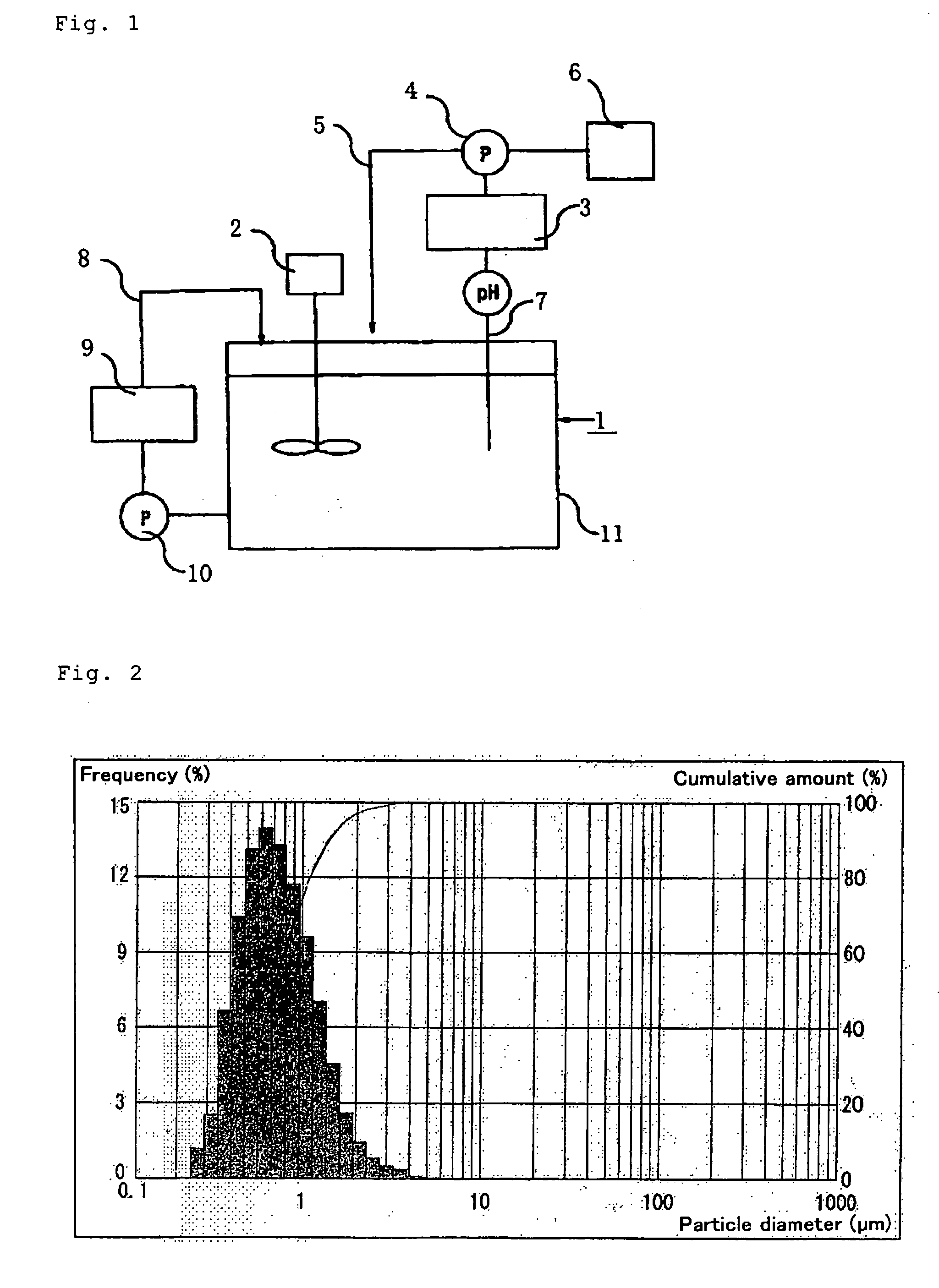Method for degradation of nucleic acids and use thereof
a nucleic acid and nucleic acid technology, applied in the field of nucleic acid degradation methods, can solve the problems of increasing the viscosity of the solution, the difficulty of solid/liquid separation, and the marked increase in the viscosity of the cell lysation produ
- Summary
- Abstract
- Description
- Claims
- Application Information
AI Technical Summary
Benefits of technology
Problems solved by technology
Method used
Image
Examples
example 1
Hypochlorite Treatment 1
[0116] PHBH was produced by cultivating a strain of R. eutropha with the Aeromonas caviae-derived PHA synthetase group genes introduced therein, which has been internationally deposited as of Aug. 7, 1997 under the name Alcaligenes eutrophus AC32 (accession number: FERM BP-6038), by the method described in Example 1 in Japanese Kokai Publication 2001-340078. After completion of cultivation, microbial cells were recovered by centrifugation, and an aqueous suspension thereof with a dry cell content of 100 g / L was prepared. The recovered microbial cells in the aqueous suspension amounted 10% by weight on the dry weight basis, and the PHBH content in the cells was 60% by weight. To each 50 ml portion of this cell suspension was added 0.1 to 5 ml (0.3 to 14% by weight relative to the dry cell weight) of a sodium hypochlorite solution with an effective chlorine concentration of 12%, as shown in Table 1, and the resulting mixture was stirred at room temperature for...
example 2
Hypochlorite Treatment 2
[0118] An 800-ml portion of the same aqueous suspension of cultured cells as used in Example 1 was centrifuged, and 400 ml of the supernatant was discarded to give 400 ml of a twice-concentrated cell suspension (dry cell concentration 20% by weight). To this aqueous suspension of cultured cells was added 8 ml of sodium hypochlorite to an effective chlorine concentration of 1.4% by weight. The pH was 6.5. The mixture was stirred at room temperature for 2 hours and, after completion of the reaction, the pH was adjusted to 8.2 with 5 N NaOH. This aqueous suspension was placed in the cell disrupting vessel 11 shown in FIG. 1, the reaction vessel was connected to a Niro Soavi (Italy) model PA2K high-pressure homogenizer (disrupting apparatus 9), and one homogenization procedure was carried out at a pressure of 400 to 500 kgf / cm2. Then, after each passage of the whole amount of 400 ml, 10% sodium hydroxide was added and, in this manner, the pH of the suspension wa...
example 3
[0122] In Example 3, the pH was made alkaline at an early stage after hypochlorous acid treatment, and the extent of decrease in the molecular weight of PHBH was checked. Further, an enzyme / surfactant treatment was carried out, and the quality after washing with water was evaluated.
[0123] PHBH was produced by cultivating a strain of R. eutropha with the Aeromonas caviae-derived PHA synthetase group genes introduced therein, which has been internationally deposited as of Aug. 7, 1997 under the name Alcaligenes eutrophus AC32 (accession number: FERM BP-6038), by the method described in Example 1 in Japanese Kokai Publication 2001-340078. After completion of the cultivation, the cell content was 9.9% by weight, the weight average molecular weight was 2,070,000, the polymer content was 62% by weight, the 3HH content was 4.5 mole percent. To this culture broth (1.2 L) was added 12 ml of a sodium hypochlorite solution (effective chlorine concentration 1.4% by weight), and the mixture was...
PUM
| Property | Measurement | Unit |
|---|---|---|
| temperature | aaaaa | aaaaa |
| pH | aaaaa | aaaaa |
| temperature | aaaaa | aaaaa |
Abstract
Description
Claims
Application Information
 Login to View More
Login to View More - R&D
- Intellectual Property
- Life Sciences
- Materials
- Tech Scout
- Unparalleled Data Quality
- Higher Quality Content
- 60% Fewer Hallucinations
Browse by: Latest US Patents, China's latest patents, Technical Efficacy Thesaurus, Application Domain, Technology Topic, Popular Technical Reports.
© 2025 PatSnap. All rights reserved.Legal|Privacy policy|Modern Slavery Act Transparency Statement|Sitemap|About US| Contact US: help@patsnap.com

